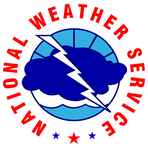The Polar Vortex: A Bitter Chill in a Warming World
January 8, 2025, 11:35 pm
The polar vortex is a beast. It lurks in the Arctic, a swirling mass of icy air. When it stays put, the North Pole remains frigid. But when it stretches and plunges south, it brings a bitter chill to the Southern United States. This winter, the vortex has unleashed its fury, leaving communities grappling with snow, ice, and dangerously low temperatures.
In early January 2025, the polar vortex descended like a dark cloud over the U.S. The National Weather Service warned of severe cold, with temperatures plunging into the single digits across the Plains and the Ohio Valley. Kansas to Washington braced for the worst. Meteorologists called it a polar vortex event, a phenomenon that is becoming more common in our warming world.
Imagine a rubber band. When it’s at rest, it’s round and compact. But pull it, and it stretches. This is what happens to the polar vortex. It elongates, sending frigid air southward. Judah Cohen, a seasonal forecast director, explains this stretching. It’s a visual metaphor for a climate system under stress.
The Arctic is warming four times faster than the rest of the planet. This rapid change is shrinking the temperature difference between the Arctic and the equator. As the Arctic sea ice melts, it releases heat into the atmosphere. This heat warps the polar vortex, making it more prone to disruptions. The jet stream, which guides weather patterns, becomes amplified. The result? More frequent cold blasts, even as global temperatures rise.
It’s a paradox. The world is warming, yet cold air outbreaks are on the rise. This winter, Texas, Oklahoma, and Arkansas prepared for their own icy encounters. A low-pressure system was expected to form, bringing snow to the Dallas area. Meteorologists warned of slick roads and dangerous conditions. In a state unaccustomed to snow, the preparations were frantic.
In Virginia, residents faced a different battle. Carol Grayson, a great-grandmother, struggled to shovel knee-deep snow. Her plastic shovel felt inadequate against the frozen mass. The once vibrant neighborhood had grown quiet. The teenagers who used to help had moved away. Now, Grayson faced the mountain of snow alone.
As the vortex swept south, it wreaked havoc. Transportation became a nightmare. Roads turned treacherous, leading to hundreds of accidents. In Virginia alone, state police responded to over 650 crashes. The icy grip of winter claimed lives. A state trooper was injured while responding to a weather-related incident. The toll was heavy.
Air travel was no better. More than 1,000 flights were delayed, and over 2,300 were canceled. Airports struggled to keep up with the chaos. Ronald Reagan Washington National Airport reported significant disruptions. Crews worked tirelessly to clear runways, but the snow kept falling.
Power outages compounded the misery. About 200,000 customers across several states found themselves in the dark. In Richmond, Virginia, a weather-related power outage caused a malfunction in the water system. Officials issued a boil-water advisory, leaving residents scrambling for safe drinking water. The Capitol building closed, and lawmakers were forced to find alternative locations.
The polar vortex is not just a weather event; it’s a symptom of a larger issue. Climate change is reshaping our world. The warming Arctic is a ticking time bomb. As temperatures rise, the delicate balance of our climate is disrupted. The polar vortex, once a predictable phenomenon, is now unpredictable.
Experts warn that we must adapt. The cold may still come, but it will be accompanied by warmer winters. This duality is the new normal. The average winter temperature has risen by 1.1 degrees Fahrenheit over the past 25 years. This change is subtle but significant. It alters ecosystems, agriculture, and our daily lives.
Farmers in northern Florida worry about their crops. The fern crop, essential for floral arrangements, is at risk. Citrus trees are more resilient, but growers remain vigilant. The fear of frost looms large as temperatures dip.
The polar vortex is a reminder of our vulnerability. It challenges our infrastructure, our preparedness, and our understanding of climate. As we face these bitter cold spells, we must also confront the warming world. The two are intertwined, a complex dance of extremes.
In the end, the polar vortex is a wake-up call. It’s a stark reminder that climate change is real and present. We must heed the signs. The cold may come, but it’s the warming that demands our attention. As we shovel snow and navigate icy roads, we must also advocate for change. The future depends on it.
In this new era, we must adapt and prepare. The polar vortex may be a fleeting event, but its implications are lasting. The world is changing, and so must we. Embrace the cold, but remember the warmth of action. The time to act is now.
In early January 2025, the polar vortex descended like a dark cloud over the U.S. The National Weather Service warned of severe cold, with temperatures plunging into the single digits across the Plains and the Ohio Valley. Kansas to Washington braced for the worst. Meteorologists called it a polar vortex event, a phenomenon that is becoming more common in our warming world.
Imagine a rubber band. When it’s at rest, it’s round and compact. But pull it, and it stretches. This is what happens to the polar vortex. It elongates, sending frigid air southward. Judah Cohen, a seasonal forecast director, explains this stretching. It’s a visual metaphor for a climate system under stress.
The Arctic is warming four times faster than the rest of the planet. This rapid change is shrinking the temperature difference between the Arctic and the equator. As the Arctic sea ice melts, it releases heat into the atmosphere. This heat warps the polar vortex, making it more prone to disruptions. The jet stream, which guides weather patterns, becomes amplified. The result? More frequent cold blasts, even as global temperatures rise.
It’s a paradox. The world is warming, yet cold air outbreaks are on the rise. This winter, Texas, Oklahoma, and Arkansas prepared for their own icy encounters. A low-pressure system was expected to form, bringing snow to the Dallas area. Meteorologists warned of slick roads and dangerous conditions. In a state unaccustomed to snow, the preparations were frantic.
In Virginia, residents faced a different battle. Carol Grayson, a great-grandmother, struggled to shovel knee-deep snow. Her plastic shovel felt inadequate against the frozen mass. The once vibrant neighborhood had grown quiet. The teenagers who used to help had moved away. Now, Grayson faced the mountain of snow alone.
As the vortex swept south, it wreaked havoc. Transportation became a nightmare. Roads turned treacherous, leading to hundreds of accidents. In Virginia alone, state police responded to over 650 crashes. The icy grip of winter claimed lives. A state trooper was injured while responding to a weather-related incident. The toll was heavy.
Air travel was no better. More than 1,000 flights were delayed, and over 2,300 were canceled. Airports struggled to keep up with the chaos. Ronald Reagan Washington National Airport reported significant disruptions. Crews worked tirelessly to clear runways, but the snow kept falling.
Power outages compounded the misery. About 200,000 customers across several states found themselves in the dark. In Richmond, Virginia, a weather-related power outage caused a malfunction in the water system. Officials issued a boil-water advisory, leaving residents scrambling for safe drinking water. The Capitol building closed, and lawmakers were forced to find alternative locations.
The polar vortex is not just a weather event; it’s a symptom of a larger issue. Climate change is reshaping our world. The warming Arctic is a ticking time bomb. As temperatures rise, the delicate balance of our climate is disrupted. The polar vortex, once a predictable phenomenon, is now unpredictable.
Experts warn that we must adapt. The cold may still come, but it will be accompanied by warmer winters. This duality is the new normal. The average winter temperature has risen by 1.1 degrees Fahrenheit over the past 25 years. This change is subtle but significant. It alters ecosystems, agriculture, and our daily lives.
Farmers in northern Florida worry about their crops. The fern crop, essential for floral arrangements, is at risk. Citrus trees are more resilient, but growers remain vigilant. The fear of frost looms large as temperatures dip.
The polar vortex is a reminder of our vulnerability. It challenges our infrastructure, our preparedness, and our understanding of climate. As we face these bitter cold spells, we must also confront the warming world. The two are intertwined, a complex dance of extremes.
In the end, the polar vortex is a wake-up call. It’s a stark reminder that climate change is real and present. We must heed the signs. The cold may come, but it’s the warming that demands our attention. As we shovel snow and navigate icy roads, we must also advocate for change. The future depends on it.
In this new era, we must adapt and prepare. The polar vortex may be a fleeting event, but its implications are lasting. The world is changing, and so must we. Embrace the cold, but remember the warmth of action. The time to act is now.

